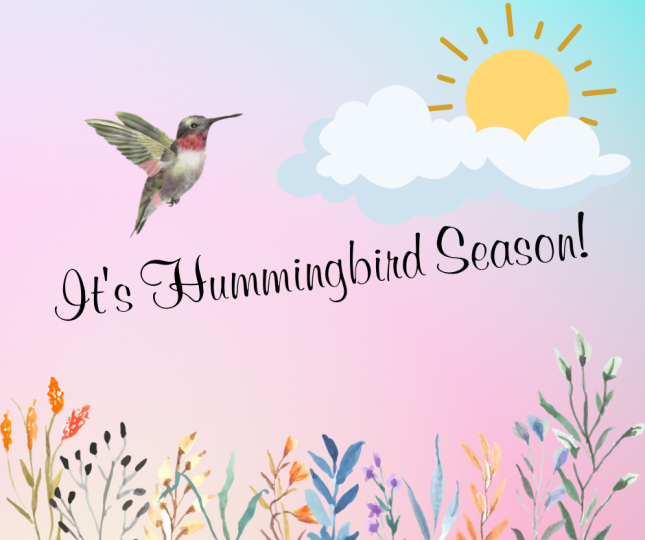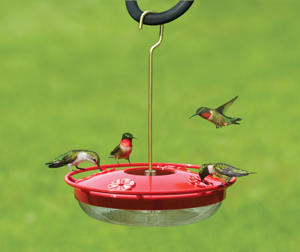
HUMMINGBIRD BASICS
How have they survived with so many disadvantages?
• Smallest in the class of all birds - over 8,000 other species –
o They are only 2 to 8 inches in size
• Total weight is 1/10 of an ounce – [prop = nickel or stamped envelope in which 10 hummingbirds (1 ounce) could be sent for the price of one stamp]
• Brain the size of a BB – small brain for such a talented bird
• Such weak legs it’s unable to walk
• Total population in restricted to just the New World
RUBY-THROATED MIGRATION
• Go south to southern Mexico and northern Panama
• Main migration route is over Gulf of Mexico from the Yucatan peninsula to Gulf Coast (anywhere from Texas to Florida). A small number go overland through Mexico and others hop the Caribbean islands to the Florida Keys
• Trans-gulf migration – nonstop flight for 18 to 22 hours – 600 miles
• Believed to depart at dusk when crossing the Gulf
• Banding shows many birds pass through same yards, on same day, year after year
• Pre-migration weight goes from .1 ounce up to .22 - need .07 ounces of fat to get across Gulf
• Many start heading south as early as mid-July
• Aggressive behavior declines as soon as migration instinct is triggered
• Starting in mid-July birds seen at feeders one day are gone the next and are replaced by new birds
• During fall migration period take the largest number of Hummingbirds you see at one time and multiple by 5 for the total number of Hummingbirds visiting your feeders in one day (see 10 – actually 50)
• Once on wintering grounds they become shy and subordinate as they are low in the pecking order with local birds
• Many return to the same breeding grounds year after year – even the same tree
• May double their weight before migration
• Adult males arrive back at breeding grounds approx. 10 days before females
• Food availability is thought to be a prime determinant of migratory routes
FEEDING AND FORAGING
• Nectar is important part of diet, but arthropods are the major food component caught by “hawking” them from mid air could be called the “tiny flycatcher”
• Hummingbirds eat about every 10 minutes
• They lap up to twice their body weight in nectar every day (most birds only eat ¼ - ½ their body weight)
• Hummingbirds lap up nectar with their long tongues. There is a groove on either side of the tongue that creates a capillary action to help draw the nectar up the tongue and into the mouth during the lapping action
• Hummingbirds can extend out their tongue approximately a distance equal to the length of their bill
• The tip of their tongue is forked (like a snake)
• While lapping up nectar, Hummingbirds can move their tongues in and out of their bill at a rate of up to 12 times a second
• Female Hummingbirds tongues are longer than the males - foraging advantage
• They eat insects and insect eggs on the ground and in trees. They love spiders and spider eggs. They use their bill and not their tongue to catch insects.
• They do not have an innate preference for red. Each hummingbird must learn the association between red, purple, yellow flowers and food
• Has remarkable ability to learn food-rich plants and memorize locations
• Ideal sugar concentration in plant nectar is 20% sucrose
• Will use the wells [holes] drilled in trees by Yellow-bellied Sapsuckers
• Have a crop in throat to store extra food – mix of nectar and insects



